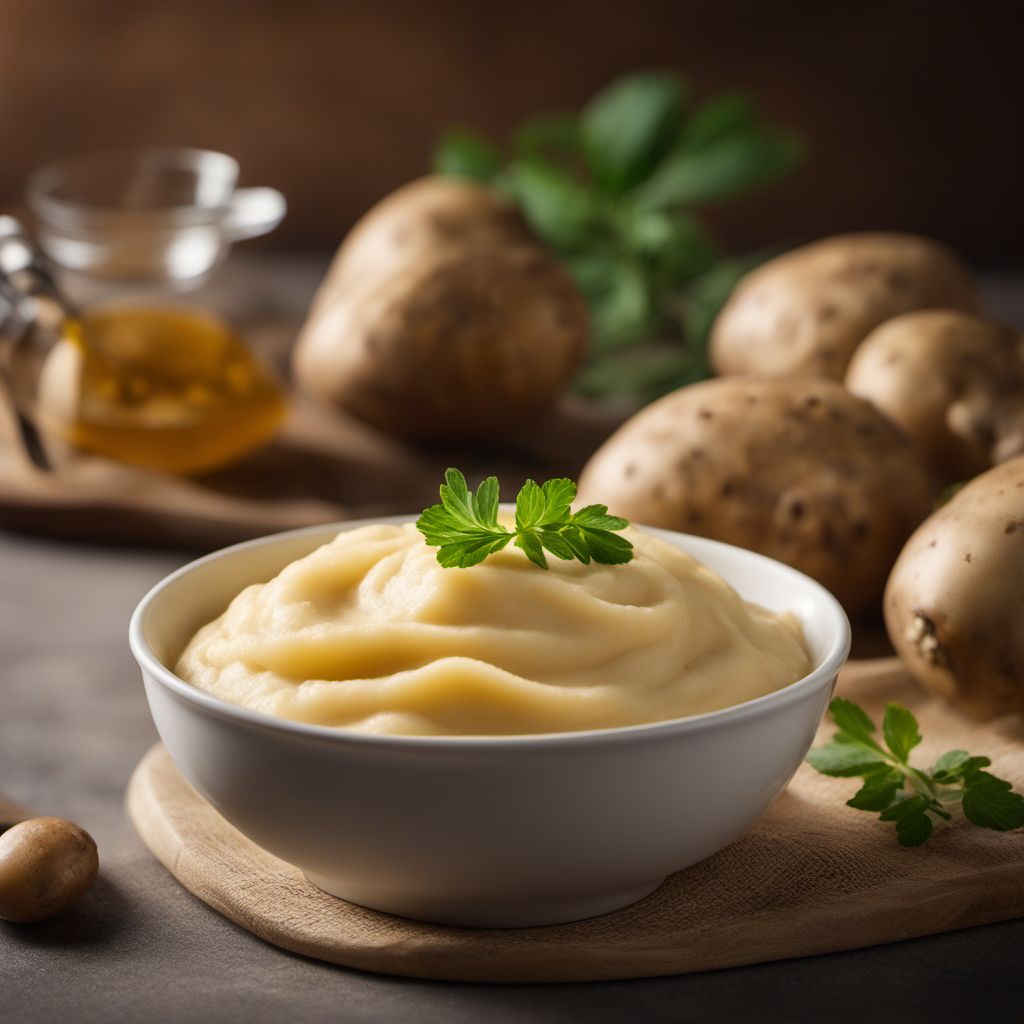
Ingredient
Potato puree from potatoes
The Creamy Delight: Potato Puree
Potato puree, made from boiled and mashed potatoes, is a smooth and creamy ingredient that enhances the texture and flavor of numerous dishes. It has a pale yellow color and a velvety consistency, making it ideal for soups, sauces, mashed potatoes, and desserts.
Origins and history
Potatoes, the main ingredient in potato puree, have a long history dating back thousands of years. They are believed to have originated in the Andes region of South America and were introduced to Europe by Spanish explorers in the 16th century. Potatoes quickly gained popularity due to their versatility, nutritional value, and ability to thrive in various climates. Today, potatoes are one of the most widely consumed and cultivated crops worldwide. Potato puree, a derivative of potatoes, has become a beloved ingredient in many cuisines around the globe.
Nutritional information
Potato puree is a good source of carbohydrates, dietary fiber, and vitamin C. It is also low in fat and cholesterol, making it a healthy addition to meals. A 1-cup serving of potato puree provides approximately 200 calories, 5 grams of fiber, and 30% of the recommended daily intake of vitamin C.
Allergens
Potato puree does not contain any known allergens, making it suitable for individuals with common food allergies.
How to select
When selecting potatoes for making potato puree, choose ones that are firm, smooth, and free from any signs of sprouting, green patches, or blemishes. Avoid potatoes that are soft or have a strong odor, as these may indicate spoilage. Additionally, opt for organic or locally grown potatoes whenever possible to ensure the best quality and flavor.
Storage recommendations
To maintain the freshness and quality of potato puree, store it in an airtight container in the refrigerator. Use it within 2-3 days to ensure optimal flavor and texture. Alternatively, potato puree can be frozen for longer storage. Transfer it to freezer-safe containers or bags, removing any excess air, and label them with the date. Frozen potato puree can be stored for up to 3 months.
How to produce
Potatoes can be easily grown by amateur gardeners in various climates. They require well-drained soil, full sun exposure, and regular watering. Plant seed potatoes in early spring and harvest them when the foliage turns yellow and begins to die back. Store harvested potatoes in a cool, dark place to prevent sprouting or spoilage.
Preparation tips
Potato puree can be used as a base for creamy soups, sauces, and gravies. It can also be incorporated into mashed potatoes, casseroles, or as a filling for dumplings or pierogies. In desserts, potato puree can be used to make cakes, pies, or custards, adding a moist and velvety texture. Additionally, potato puree can be used as a thickening agent in various recipes.
Substitutions
Mashed cauliflower, butternut squash puree, or parsnip puree can be used as substitutes for potato puree, although they may alter the flavor and texture of the final dish.
Culinary uses
Potato puree is commonly used in dishes such as mashed potatoes, potato soups, gnocchi, and shepherd's pie. It is also a popular ingredient in desserts like potato cakes, pies, and puddings. Its creamy texture and mild flavor make it a versatile ingredient that can be incorporated into both savory and sweet recipes.
Availability
Potato puree is widely available in grocery stores and supermarkets worldwide. It is a common ingredient in many cuisines and can be found in various forms, including canned, frozen, or dehydrated. Fresh potato puree can be made at home by boiling and mashing potatoes until smooth and creamy.
